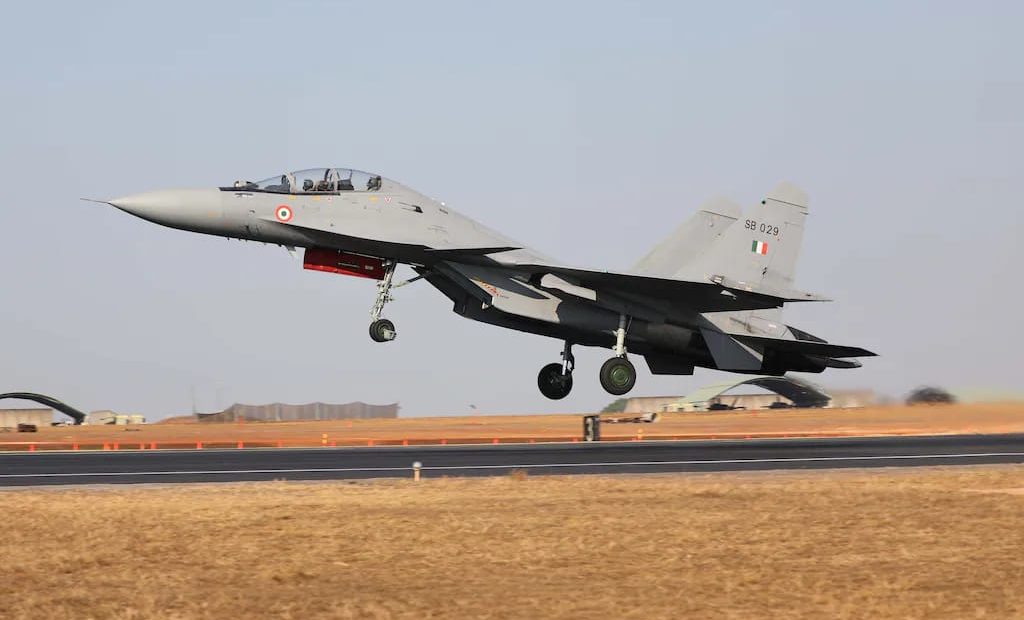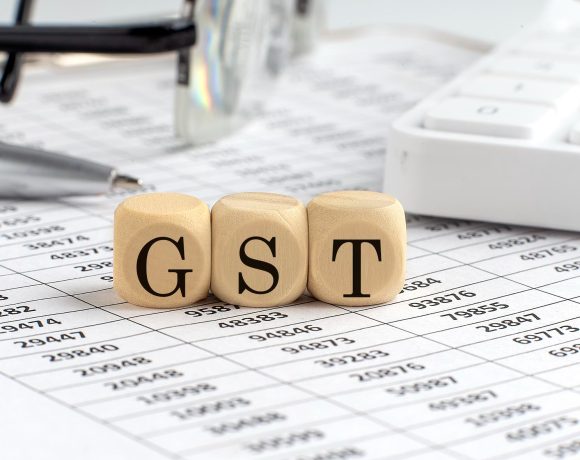
Super Sukhois Ascend: IAF’s Su-30MKIs Set for Indigenous Overhaul to Counter China-Pak Threat
I. Introduction
The Sukhoi Su-30MKI has been the spine of the Indian Air Force’s combat fleet for over two decades, dominating the skies with its twin-engine power, long-range capability, and multirole versatility. However, with the emergence of stealth fighters like China’s J-20, modern electronic warfare systems, and longer-range beyond-visual-range (BVR) missiles in the region, the Su-30MKI platform has begun to show signs of technological fatigue. Recognizing the growing threat from both Pakistan and China, the Indian Air Force (IAF) has initiated a landmark modernization program—code-named the “Super Sukhoi” upgrade—to comprehensively overhaul 84 aircraft in its fleet.
This isn’t just a retrofit. It’s a radical transformation aiming to replace outdated Russian components with next-generation Indian technologies, reduce maintenance dependencies, and arm the aircraft with cutting-edge sensors, electronic warfare capabilities, and indigenous BVR missiles. The result: a significantly enhanced platform capable of outmatching Pakistan’s F-16s and JF-17 Block IIIs, and holding its own against China’s J-16 and J-10C, while remaining relevant in contested airspace for the next 15–20 years.
II. What is the Super Sukhoi Upgrade?
The Super Sukhoi upgrade program is a five-year initiative led by Hindustan Aeronautics Limited (HAL) to modernize 84 frontline Su-30MKI aircraft. These upgrades aim to:
Replace Russian-origin radar, computers, and flight systems with Indian alternatives
Introduce advanced electronic warfare and survivability equipment
Improve radar and visual detection capabilities
Integrate next-generation air-to-air missiles like Astra Mk2 and Mk3
Reduce maintenance downtime by ensuring domestic supply chain control
With an estimated cost of Rs 60,000 crore, the program is expected to be a major force multiplier, elevating the Su-30MKI to a “4.5++ generation” platform. This approach not only boosts combat performance but ensures full sovereign control over the fleet’s operational lifecycle—a strategic imperative in an era of fast-evolving threats.
III. Complete Breakdown of Upgrades
The “Super Sukhoi” isn’t a cosmetic enhancement. It’s a complete systems overhaul touching every critical node of the aircraft’s combat ecosystem—radar, cockpit, electronic warfare, weapons, and survivability. Here is a breakdown of the major upgrades:
A. Radar and Sensors: A Game-Changer with Uttam AESA
At the core of the upgrade is the replacement of the Su-30MKI’s original Russian radar with the indigenously developed Uttam AESA radar (scaled variant), produced by DRDO’s LRDE. The radar offers:
Detection range of approximately 400 km
Simultaneous tracking and engagement of multiple airborne targets
Advanced ECCM (Electronic Counter-Counter Measures) capabilities
LPI (Low Probability of Intercept) features for stealthy scanning
This upgrade gives the Su-30MKI radar superiority over most non-stealth aircraft in the region and puts it in the league of advanced fighters like the Rafale and J-16.
Also included is a new Infrared Search and Track (IRST) system from BEL, offering passive detection capabilities crucial for identifying stealth aircraft like the J-20, which attempt to avoid radar detection.
B. Avionics and Cockpit: From Soviet Legacy to AI-Infused Interface
The Su-30MKI’s old analog-digital hybrid cockpit is being replaced with a fully digital, AI-enabled system developed by HAL and BEL. Key features include:
Multi-Function Display Systems (MFDS) offering improved situational awareness
Voice-Activated Command System (VACS) to reduce pilot workload and enable quicker response time in combat
A Digital Flight Control Computer (DFCC) to enhance aircraft maneuverability, especially in high angle-of-attack conditions
This reimagined cockpit brings the Su-30MKI’s interface experience on par with modern fighters like the F-35 in terms of user operability, albeit without stealth.
C. Electronic Warfare Suite: Full-Spectrum Defensibility
The upgraded platform will feature a robust electronic warfare suite centered around the Advanced Self Protection Jammer (ASPJ) developed by DRDO’s DLRL. It includes:
Radar Warning Receivers (RWRs)
Active jamming pods for self-defense against enemy radars and missiles
Potential future integration of towed decoys and DRFM-based deception tech
Together, these systems will make the Super Sukhoi significantly more survivable in a contested airspace saturated with surface-to-air missile systems and enemy fighters.
D. Weapon Systems: Indigenous Missiles for Indigenous Muscle
A key highlight is the full integration of Astra family missiles:
Astra Mk1: BVR missile with a range of ~110 km, already in service
Astra Mk2: Undergoing testing, range ~160–200 km, more powerful seeker
Astra Mk3 (SFRJ-powered): In advanced development, expected range beyond 300 km
The aircraft will also continue to carry heavy precision-guided munitions, BrahMos-A missiles for deep strike roles, and anti-radiation missiles for SEAD missions. This diversified loadout ensures air dominance, strike, and electronic warfare capabilities in a single platform.
IV. Comparative Threat Analysis: Pakistan and China’s Air Combat Platforms
The true measure of any upgrade lies in how it rebalances power against adversaries. The Super Sukhoi upgrade is directly aimed at countering specific threats posed by Pakistan’s frontline fighters and China’s rapidly modernizing air force. Here’s how they compare:
A. Pakistan Air Force: Numerically Stable, Technologically Stagnant
1. JF-17 Thunder (Block I/II/III)
Developed with China, Block III includes KLJ-7A AESA radar and PL-15 BVR missiles (range ~200 km)
Limited by engine performance, sensor fusion, and networked warfare capability
No IRST, limited EW suite
2. F-16 Fighting Falcon (A/B/C/D)
Equipped with APG-68 radar, AIM-120C5 AMRAAMs (~105 km)
Excellent agility and situational awareness
Still formidable, but limited in number (~75 total, not all fully upgraded)
3. Mirage III/V (Upgraded)
Upgraded for strike roles, but obsolete in air superiority scenarios
Super Sukhoi Advantage:
Uttam AESA radar outperforms APG-68 and KLJ-7A
Astra Mk2 out-ranges AMRAAMs
Super Sukhoi’s IRST + ASPJ makes it virtually untouchable by anything Pakistan flies, especially in BVR and EW warfare
B. China’s PLAAF: The Real Challenge
1. Chengdu J-20 Mighty Dragon
Stealth 5th-gen aircraft with Type 1475 AESA radar and PL-15 missiles (250+ km)
True stealth, but operational readiness and WS-15 engine maturity still in question
Likely has an edge in first-look advantage due to radar cross-section (RCS)
2. Shenyang J-16
Derived from Su-30 lineage
AESA radar, PL-15 integration, advanced EW pods
Closest peer to Super Sukhoi in weight class and multirole capability
3. Chengdu J-10C
Agile, AESA-equipped single-engine fighter with PL-15 and PL-10 missiles
Highly maneuverable and cost-effective
4. Su-35 (Russian origin)
Small numbers but excellent radar and thrust-vectoring; limited deployment
Super Sukhoi Positioning:
J-20: Super Sukhoi won’t beat it in stealth, but IRST and AEW&C pairing can mitigate its advantages
J-16: Super Sukhoi can match or even exceed performance with Uttam + Astra + AI cockpit
J-10C: Super Sukhoi outmuscles it in payload, range, and electronic warfare
Summary: The Super Sukhoi decisively dominates Pakistan’s air force, both technologically and in weapon reach. Against China, it can match and even exceed platforms like J-16 and J-10C, while acting as a survivable force-multiplier when working in conjunction with Indian AWACS and SAM coverage against stealth threats like the J-20.
V. Strategic Capability Matrix: How Super Sukhois Stack Up Across Domains
The modern battlefield is not decided by raw speed or weight alone, but by a complex balance of sensors, weapons, survivability, and information processing. Here is a domain-wise comparative capability matrix of the Super Sukhoi upgrade against adversary aircraft:
1. Radar and Detection
Capability Super Sukhoi JF-17 Block III J-10C / J-16 J-20
Radar Scaled Uttam AESA (~400 km) KLJ-7A AESA (~150-170 km) AESA, likely 200+ km Type 1475 AESA
IRST Yes (BEL) No No / limited Unclear
Sensor Fusion Yes (AI-enabled cockpit) Basic Partial Advanced
Verdict: Super Sukhoi offers best-in-class sensor fusion among 4.5 gen fighters and the ability to passively detect stealth aircraft via IRST.
2. Missile Reach and Combat Load
Weapon Super Sukhoi JF-17 J-10C/J-16 J-20
BVR Missiles Astra Mk1/2 (110–160 km), Astra Mk3 (planned >300 km) PL-12, PL-15 PL-15 (~250–300 km) PL-15
WVR Missiles R-73, possibly Astra WVR PL-5 / PL-10 PL-10 PL-10
Max Payload 8,000 kg 3,500 kg ~6,000–8,000 kg ~6,000 kg
Verdict: While PL-15 may out-range Astra Mk2, India’s Astra Mk3 will restore parity or superiority. Super Sukhoi also offers unmatched multirole flexibility due to payload superiority.
3. Electronic Warfare and Survivability
Feature Super Sukhoi JF-17 J-10C / J-16 J-20
Jammer ASPJ (DRDO) Basic Advanced pods Stealth + EW
RWR / ECM Yes Limited Yes Yes
Towed Decoys Possible future integration No Likely Likely
Verdict: Super Sukhoi’s indigenous jammers and survivabity suite make it highly resilient in a contested environment. It will be less survivable than J-20 due to lack of stealth, but on par with other Chinese fighters.
4. Cockpit and Pilot Interface
Feature Super Sukhoi JF-17 J-10C / J-16 J-20
Display MFDS Glass cockpit Glass cockpit Panoramic screen
AI/Voice VACS (BEL) No No Advanced AI
Avionics Origin Indigenous (HAL-BEL) Chinese Chinese Chinese
Verdict: The AI-powered VACS system and modern displays bring the Super Sukhoi to the cutting edge of pilot-assist technology, second only to full 5th-gen platforms.
5. Strategic Deployment and Flexibility
Criteria Super Sukhoi JF-17 J-10C/J-16 J-20
Mission Flexibility Air dominance, strike, anti-ship, SEAD Limited Multirole Air superiority
Weapon Variety Missiles, BrahMos, PGMs Mostly AAMs Diverse Primarily AAMs
Availability 84 being upgraded 150+ in service Hundreds Limited in number
Verdict: Super Sukhoi remains India’s most flexible platform, capable of adapting across theatres and mission types—from high-altitude combat to maritime strike.
Summary:
With these upgrades, the Su-30MKI becomes a top-tier 4.5++ generation aircraft, dominating the skies against Pakistani threats and leveling the field against Chinese 4th-gen jets. Though it cannot rival stealth aircraft like the J-20 in signature reduction, its sensor suite, AI cockpit, BVR weapons, and EW systems give it real teeth, especially when integrated with India’s AWACS and S-400 cover.
VI. Who is Building the Super Sukhoi? The Indian Defense Industrial Effort
One of the most strategically significant aspects of the Super Sukhoi upgrade is not just what is being added, but who is building it. Unlike legacy deals where key systems were imported from Russia, this transformation is being led entirely by Indian defense institutions and companies—signaling a shift towards full-spectrum indigenous capability.
1. Hindustan Aeronautics Limited (HAL): Lead Integrator and Modernizer
HAL is the prime contractor for the entire Super Sukhoi project.
Responsible for:
Airframe modifications
Integration of new systems
Flight testing and certification
Coordination between all partner agencies
HAL’s Nashik Division will carry out most physical upgrades to the Su-30MKIs.
This is a significant milestone for HAL, as it shifts from just assembling Russian kits to fully re-engineering frontline combat aircraft.
2. Bharat Electronics Limited (BEL): Avionics and Cockpit Systems
BEL is in charge of delivering the next-generation avionics suite, including:
Multi-Function Display Systems (MFDS)
Voice Activated Command System (VACS)
Mission Computers
IRST (Infrared Search and Track) system
Collaborated with HAL to co-develop the Digital Flight Control Computer (DFCC)
BEL’s growing role marks India’s capability to build world-class avionics in-house, previously dominated by foreign players.
3. Defence Research and Development Organisation (DRDO): R&D Powerhouse
Multiple DRDO labs are supporting different segments of the program:
a. LRDE (Electronics & Radar Development Establishment)
Developer of the scaled Uttam AESA radar
Adapted for the Su-30MKI’s power and size envelope
Offers 400 km range with modern ECCM and LPI features
b. DLRL (Defence Electronics Research Lab)
Responsible for the Advanced Self Protection Jammer (ASPJ) and EW suite
Ensures battlefield survivability and anti-jamming capabilities
c. RCI (Research Centre Imarat)
Leading integration of Astra missile family with the Su-30MKI systems
Working on fire-control, seeker integration, and missile testing
d. CABS (Centre for Airborne Systems)
Ensures compatibility with AEW&C platforms for network-centric operations
DRDO’s involvement across radar, missiles, and EW confirms India’s emergence as a full-spectrum defense R&D power.
4. Indian Air Force (IAF): User and Operational Validator
IAF is not just a customer but an active participant in the project
Providing:
Operational feedback
Test pilots for flight validation
Strategic vision for future capabilities
The IAF’s doctrinal shift toward indigenous solutions is visible through its hands-on support and confidence in Indian systems.
5. Private Sector and MSMEs: Expanding the Industrial Base
Companies like Alpha Design Technologies, Data Patterns, Tata Advanced Systems, and others are expected to provide:
Wiring harnesses
Power systems
Structural composites
AI software modules
This upgrade will generate employment, skill growth, and a ripple effect across Indian defense manufacturing, making it not just a military investment but an industrial policy decision.
Summary: The Super Sukhoi program is a landmark in self-reliant force modernization. It brings together HAL’s engineering, BEL’s systems expertise, DRDO’s R&D muscle, and the IAF’s operational clarity—forming a cohesive national effort to take full control over India’s air superiority assets.
VII. Strategic Significance of the Program
Beyond the technical upgrades, the Super Sukhoi transformation represents a strategic leap for India’s air power doctrine, defense self-reliance, and combat readiness. Its implications ripple across geopolitical, operational, and industrial domains, reinforcing India’s readiness for modern warfare and its detachment from foreign dependencies.
1. Strengthening Deterrence Against a Two-Front Threat
India faces a complex security challenge—a two-front threat from Pakistan and China. Both adversaries are investing heavily in new-generation aircraft, long-range missiles, and electronic warfare capabilities. In this environment:
Pakistan’s acquisition of Block-III JF-17s with PL-15 missiles and AESA radars,
China’s J-20 stealth fighter patrols along Ladakh and Arunachal, and
Joint exercises between the two signal increasing air force coordination.
The Super Sukhoi, with its long-range detection, superior electronic warfare suite, and indigenous BVR missiles, restores the technological and operational edge India had over the region a decade ago.
2. Extension of Su-30MKI Service Life and Relevance
Without these upgrades, the Su-30MKI fleet—despite its raw power—would have slipped into obsolescence in the face of stealth, hypersonic missiles, and modern ECM.
The upgrade:
Prolongs its frontline viability till 2045
Allows the Su-30MKI to act as a heavy strike and air dominance platform
Frees up the Rafales and Tejas Mk1A/Mk2 for quick deployment roles
This tiered force structure strengthens India’s flexibility in both wartime and peacetime operational planning.
3. Boost to Atmanirbhar Bharat: From Buyer to Builder
Super Sukhoi is not just about import substitution. It’s about confidence in India’s ability to build top-tier systems:
Indigenous AESA radar: Developed, tested, and deployed in India
Indian missiles: Astra Mk1, Mk2, and future Mk3 integrated with domestic fire-control logic
AI-assisted cockpit and voice systems: Designed entirely by HAL-BEL
Every layer of this program reflects India’s new defense maturity—where control, customization, and capability are no longer dictated by foreign suppliers.
4. Economically Strategic and Sustainably Scalable
Buying new fighters in this class (like Rafale or Su-35) would cost over Rs 800–1000 crore per unit. In contrast, upgrading existing Su-30MKIs offers:
Modern capability at a fraction of the cost
Improved serviceability and turnaround time due to local sourcing
Long-term cost savings in spare parts, MRO, and fleet management
It’s a financially prudent strategy that ensures combat readiness without overburdening the defense budget.
5. Force-Multiplier Role in Networked Warfare
The Super Sukhoi isn’t fighting alone. When paired with:
Netra AEW&C,
Rafale squadrons,
S-400 air defense systems, and
Future Tejas Mk2 formations,
it becomes the muscle in a layered, sensor-fused battlefield. In scenarios where J-20s or F-16s attempt stealth ingress, Super Sukhois with IRST and BVR reach can intercept, challenge, and neutralize.
Summary: The Super Sukhoi isn’t just a fighter jet upgrade—it’s India’s statement of intent. That it will not be caught lagging, that it will defend with indigenous systems, and that its warfighting posture is evolving with the times. From deterring adversaries to deepening self-reliance, this program is a strategic inflection point for the IAF and for Indian defense manufacturing.
VIII. Conclusion: The Road Ahead
The Super Sukhoi upgrade is more than a modernization effort—it’s a declaration that India’s airpower narrative is no longer confined to foreign purchases and imported solutions. In upgrading the Su-30MKI with indigenous systems, India has not only revived the relevance of its most numerous fighter jet but has also set a precedent for self-sufficient defense transformation.
When these 84 upgraded Su-30MKIs take to the skies, they will no longer be relics of past geopolitics—they will be war machines configured by Indian minds, powered by Indian tech, and adapted for Indian battlefronts. From long-range radar locks to electronic countermeasures, and from AI in the cockpit to fire-and-forget Astra missiles, these Super Sukhois will represent India’s strategic autonomy in the face of evolving aerial threats.
As global air forces evolve with stealth, networked operations, and high-speed engagements, India has found its answer—not by spending billions abroad, but by unlocking capability within. The Su-30MKI began as a Russian aircraft. The Super Sukhoi, in every meaningful way, will finish as an Indian one.


















